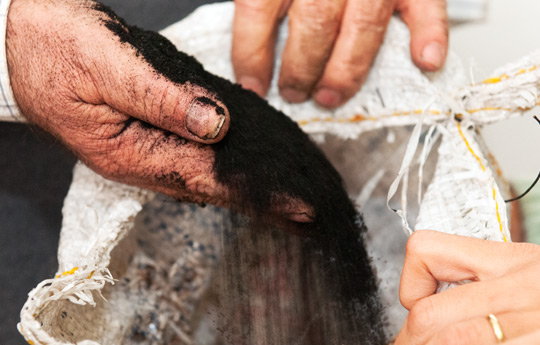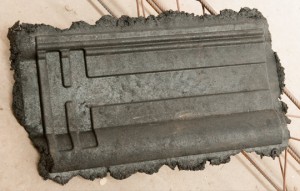AGRARIAN, ENGINEERING AND MATERIAL SCIENCES - TECHNOLOGY TRANSFER
CONICET researchers produce tiles with recycled rubber
The sustainable method is recycling, the tires are the raw material and the roofs are the product.
For more than two years, Rosana Gaggino, associate researcher of the CONICET at the Centro Experimental de la Vivienda Económica (CEVE, CONICET-AVE) [Experimental Centre for Economical Housing], and her team have undertaken a project to develop rubber tiles with material taken from discarded tires and recycled plastics from the food industry which otherwise would become environmental contaminants.
The aim of the research group was to propose an alternative to the traditional ceramic and concrete tiles. “The use of the rubber is very interesting because it is currently not much recycled in our country. It is used for the substrate of sports courts and other specific applications, but most of the tires end up in the landfills”, the researcher explains.
The problem is that the rubber takes 600 years to degrade in open landfills and it accumulates water inside. As a result, “it promotes the proliferation of the mosquitoes that transmit dengue, therefore causing serious health problems”, Gaggino adds.
A project without limits
To produce the tiles, apart from rubber, researchers use other recycled plastics – such as polyethylene – with low softening point that act as binders. “We use an extrusion machine with a press that compresses the mixture. We are testing different proportions as to find the most suitable one. We are testing different plastics, dosages and proportions”, the scientist describes.
The tests performed indicate that these tiles are more flexible than the traditional ones. Besides, they bind but they do not break, and they have a better response to harsh impact, either stone or hail, what makes them more resistant. Furthermore, Gaggino states that the results on the thermal conductivity are superior to the ones of the ordinary tiles for “the material has low thermal conductivity, and therefore it is a good insulator”. Another characteristic is that the material obtained satisfactory results in the water vapour and air permeability tests. “Apart from that, the material did not peel off after the thaw test”, the researcher comments.
Methodology
The tiles are produced by means of a process that involves plastics melting. The researcher explains that it is important to be careful about the plastic used because it needs to have a melting point under rubber decomposition as it “limits the process a bit.”
The studies indicate that the polythene melts at low temperature compared to other plastics, whereas the rubber does not melt, it decomposes at 300 degrees. Thus, the mixture has to contemplate these restrictions so the researchers are constantly testing the formula to adjust it to the maximum, Gaggino adds.
“We are committed to obtain a melting temperature of polythene that does not reach the decomposition temperature of the rubber. All this influences the viscosity of the mixture. If one does it at low temperatures, it increases a lot, thus overloading the engines and deteriorating the machines”, the researcher states.
The researcher explains that this process is necessary in order to recycle materials that cannot be reused by other means. “Fortunatelly, researchers often produce new ideas to make good use of the rubber once it finishes its useful life”, she concludes.
- By Jimena Naser

